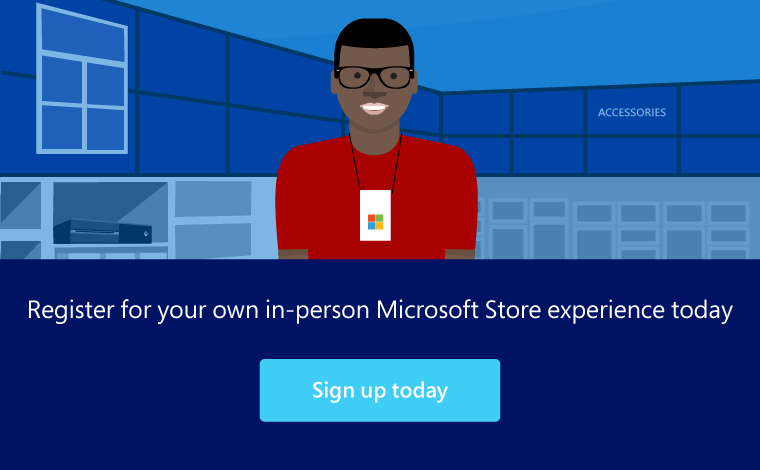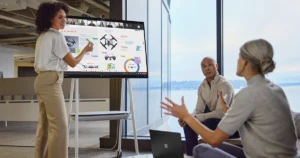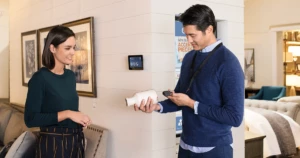
How Microsoft Stores focus on the customer experience
| Focus on: Engage Customers, Transform Products |
It’s no secret that online stores have made the shopping experience more complex for brick and mortar retailers. Customers have limited time and attention, and talking specs and performance capabilities only works on a transactional basis. Modern consumers want experiences that speak to their daily lives.

Microsoft Stores is the retail branch of Microsoft’s business ventures. Travis Walter, General Manager of Worldwide Physical Stores, heads up the brick-and-mortar division, which to-date includes 105 brick and mortar locations, including seven stores in Canada and flagship stores in New York City and Sydney, Australia. If it touches the retail store, whether it’s the look and feel, the marketing, layout, or strategy, Travis helps bring that vision to the Microsoft customers.
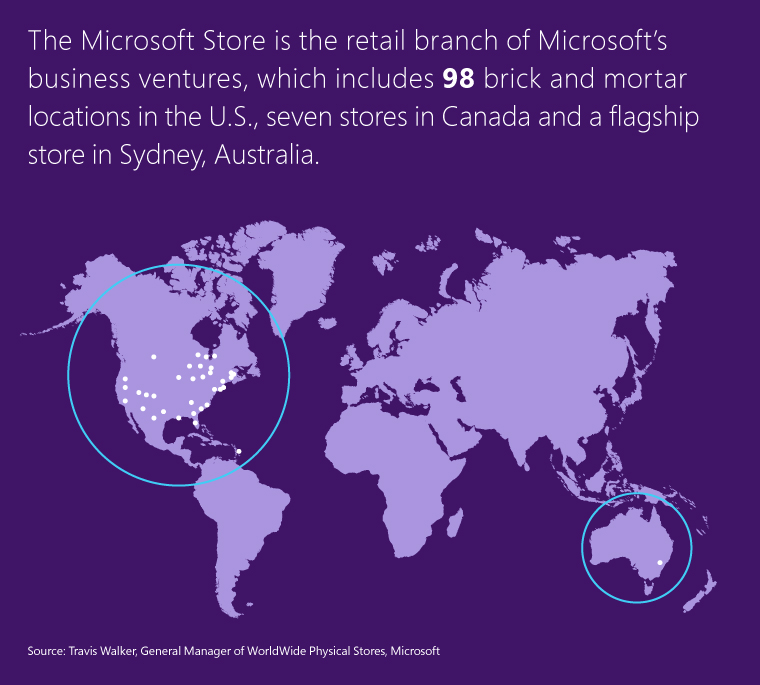
Putting your money where your mouth isIn line with Microsoft’s mission to help consumers achieve more, Microsoft Stores exist to help customers discover Microsoft technologies by using and loving them in-store. The energy inside the stores created by the vibrant colors, bright lights, and video wall sparks consumers’ creativity and provides them with a truly immersive experience. Travis’ goal is to build personal connections and help people discover what’s possible with Microsoft using a balance of online and offline solutions.
Consumption is the new currencyMoving the focus away from the products and towards shaping and influencing the way customers discover, purchase, use, and love their Microsoft products is key in building sustainable long term relationships. To that end they’ve attached Office 365 to devices and Xbox Live to the Xbox.
“Consumers can’t experience VR in a compelling way online,” explains Travis, “but since Oculus runs on Windows, we can show people the technology in the store.” While customers can certainly find their favorite devices, like the Microsoft-edition of the Galaxy S8, Microsoft Stores Retail and Retail IT came together to create Apps Now, an online application showcase that helps customers make their chosen devices smarter with Microsoft apps—a decision that has led to over 50,000 app downloads. “If you can’t beat them by buying a Microsoft phone, join them by getting them to download Microsoft apps,” Travis quips.

The Surface Hub brings Office to life, highlighting what’s possible with Office 365. Travis says that the retail store’s strategy has evolved quite a bit since the launch of their first store. Back then they were focused on selling PCs, Xboxes, software, answer desk services, and third party phones and accessories. The company realized that in order to compete in the technology space, the retail stores would need to focus on providing unique services. Their increasing commitment to creating devices made them far more experience-based. The introduction of Xbox Kinect created energy in Microsoft Stores, completely changing the dynamic. The stores became laser-focused on highlighting innovations and driving customer experiences.
From introduction to checkout, the consumer experience inside a Microsoft Store is designed to be seamless. “Customers should be able to buy wherever they want, how they want.” Travis says. That means retail employees spend a lot more time with customers ensuring a simple, positive user experience. Free training, gaming, and other events ensure that customers leave the Microsoft Store a fan of the technology.
When asked whether there is a space in this digital era for physical stores, Travis doesn’t hesitate. “Customer time is limited, but they will make time to visit a physical store to touch and feel devices. Stores offer experiences and services that aren’t available online. Customers want a place to connect with other people.” For example, when a new game launches, gamers want to experience the game with peers.

Winning with wowWith the understanding that “You have to be a fan to make a fan,” all 3,300+ employees are expected to use Microsoft technology so the associates can learn the service to better sell the service. Employees who take classes are rewarded with those digital services, such as Office, Xbox Live, and various Microsoft applications.
Stores’ associates are also highly encouraged to share their own “wow” moments, highlighting how they are “wowing” customers through personal demos and experiences they can record and send in to corporate. A weekly “WOW” winner is rewarded with a personal cash bonus, and an additional bonus for their team’s morale budget, and the winning demo is shared with all other stores as a learning tool.

‘Back of the house’ improvementsThere’s little doubt that tech offers faster, more efficient ways for consumers to purchase and receive their products. But Microsoft’s own technology comes in handy in the back of the house, too. From planning inventory to updating demos, it takes fewer people to run the store.
The server rooms used to be a highlight of tours, but since the company moved all retail servers to Azure, there is more room on the floor for product storage, and maintenance and operation costs have gone down. “Launching so many Specialty Stores overnight is a difficult task, but using the cloud makes it a thousand times easier,” Travis admits. It also helps their bottom-line by reducing overall costs and increasing profitability of specific locations.
Power BI helps Travis visualize sales reports. Dashboards for each store show how many customers are engaging and what apps they’re purchasing.

Internal communication has also improved now that store associates can connect, make announcements and share best practices with Yammer. Employees stay up to date by sharing essential information on Learning Academy, OneDrive, and SharePoint and can view new product demos and monthly updates via live video broadcasts with Skype for Business.
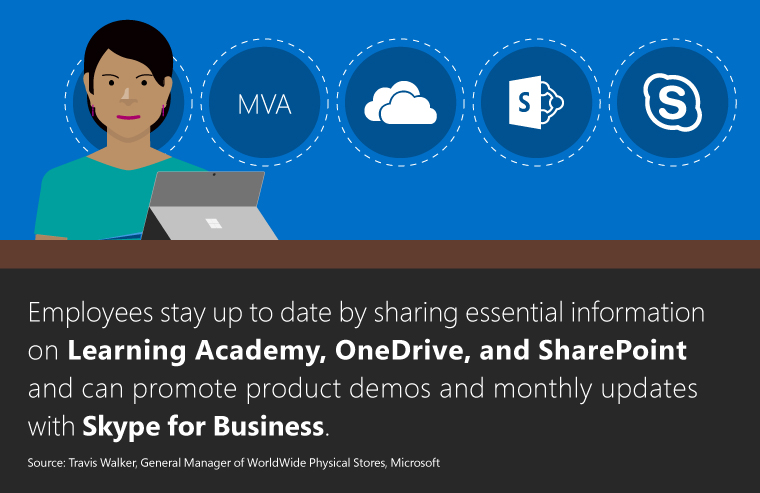
More to come…“While we’ve always been community-based,” Travis says, “we’ve migrated over time from selling to the consumer to selling to small and medium businesses.” In fact the shift to the cloud has allowed the brand to reconsider its store format. There are currently three formats: Specialty Stores that focus on a limited range of technology, Full Line Stores that showcase Microsoft’s complete capabilities, and Flagship Stores, which dedicate additional resources to enterprise customers (the format on which the Sydney, Australia flagship location was designed). A second floor is dedicated to enterprise customers and moving to Azure allows the company to create more value with this demographic. With the change, store associates have become quite adept at selling not only to consumers, but to business customers, as well.

The next step is preparing the store associates to speak to digital transformation, and that means providing them with the knowledge to talk comfortably about the cloud. They’re also looking at how they can use LinkedIn as a training tool.
Although Microsoft uses some third party solutions for retail management, the company is thinking towards the future, and are eager to discover new opportunities for the latest retail solution technology. For now, they are excited about the shift from software on a specific platform to an experience across all platforms that can offer customers what they want, how they want it, and when they want it, and drive usage from Microsoft apps and products.
Related Content
- Read more real stories of digital transformation

